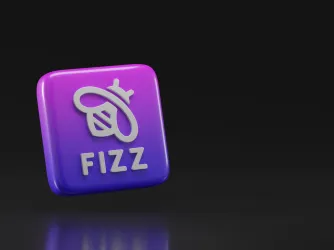Table of Contents
FIRE survey shows Judge Duncan shoutdown had ‘chilling effect’ on Stanford students

Today, the Foundation for Individual Rights and Expression released “The Judge Duncan Shoutdown: What Stanford Students Think.” This retrospective survey report combines data from a FIRE and College Pulse survey conducted last year after the shoutdown of U.S. Court of Appeals for the Fifth Circuit Judge Kyle Duncan at Stanford University with an analysis of FIRE’s College Free Speech Rankings survey data, which was administered before — and extended through the time of — the shoutdown.
Why are these findings important?
Because FIRE and College Pulse administered the CFSR survey during the span of time which encompassed the Judge Duncan shoutdown, we can analyze the real-time effect that a high-profile heckler’s veto had on Stanford’s free speech climate. We also took the opportunity to poll an additional 531 Stanford students after the shoutdown and ask specific questions about the shoutdown.
Evidence of a chilling effect
The term “chilling effect” refers to the impact of laws, regulations, or practices that lead individuals or groups to refrain from expressing themselves. It can also be used to refer to situations when individuals or groups self-censor because they fear facing social sanction, and that is how the term is used here.
Of the 284 students surveyed at Stanford during the span of time in which the Judge Duncan shoutdown occurred, 78 took the survey before the shoutdown and 206 took it after. This allows us to analyze the impact the shoutdown had on Stanford students’ ability to express themselves.
Our analysis of the CFSR survey data reveals that Stanford students as a whole did not experience a chilling effect. However, we did find evidence of a chilling effect among the small number of conservative Stanford students surveyed (42 respondents, or 15% of the sample). Thirteen conservative students took the survey before the Judge Duncan shoutdown, and 29 took it afterward. (These are small samples, to be sure, but that’s because so few students at the university openly identify as conservative in the first place, so only a few dozen are needed for a fairly representative sample of conservatives.)
The difference in the responses between the conservative students surveyed before and after the shoutdown are stark. Conservative Stanford students were less comfortable after the shoutdown than before the shoutdown expressing their views on a controversial political topic in the classroom, in a common campus space, and in a written assignment.

Conservative students also self-censored more often after the shoutdown than before the shoutdown, and they said they are more worried about damaging their reputation because of someone misunderstanding something they have said or done.
How did students feel about Judge Duncan’s visit?
The survey results indicate that Stanford students as a whole had mixed feelings about Judge Duncan’s visit to campus. When asked if Stanford’s administration was wrong to apologize to Judge Duncan, about two-thirds of respondents said this describes their feelings at least “slightly well,” and more than half of students surveyed also said they felt this way when asked if the administration should have canceled Judge Duncan’s speech.
At the same time, when asked if Stanford failed to uphold its commitment to free speech during Judge Duncan’s visit to Stanford, about three-quarters of Stanford students said this describes their feelings at least “slightly well,” and almost a quarter said this describes their feelings “very well” or “completely.”
Finally, conservative Stanford students felt more comfortable than their liberal or moderate counterparts about discussing Judge Duncan’s visit. Liberal students also felt more comfortable than moderates expressing their views. This may be because the incident received extensive media coverage — much of it critical of the protesters and actions of then-Dean Tirien Steinbach. It may also be because Stanford’s administration made it clear two days after the event that it did not approve of the shoutdown by issuing an apology to Judge Duncan, mandating students participate in free speech training, and placing Dean Steinbach on indefinite leave (she later resigned).
What else should I know about these results?
Three-fifths of Stanford students polled after the Judge Duncan shoutdown said that someone who has stated that “same-sex marriage is unconstitutional” — Duncan argued in support of same-sex marriage bans as an attorney — should not be allowed to give a speech on campus.
Additionally, three-quarters of Stanford students said that shouting down a speaker to prevent them from speaking on campus is acceptable, about three-fifths said that blocking other students from attending a campus speech is acceptable, and more than a third said that using physical violence to stop a campus speech is acceptable. Thus, given that so many Stanford students were supportive of shouting down speakers, and that so many believed that someone holding views similar to Judge Duncan should not be allowed to give a speech on campus, perhaps it isn’t all too surprising what unfolded during Judge Duncan’s visit.

Finally, the survey asked students if they are concerned about being “actively discriminated against” by students or faculty on campus because of their political beliefs. Conservative and moderate Stanford students were more concerned than liberal students about this.
While Stanford was more hostile to conservative speakers, substantial minorities also said Stanford should not allow speakers on campus who voice controversial left-wing coded beliefs such as “Organized religion is a sexist, misogynistic institution” (33%) and “The federal government should confiscate all guns” (29%).
Of course, silencing any student or campus speaker, left or right, runs contrary to the mission of an institution of higher learning. Stanford needs to recommit to creating an environment where contentious views are met with debate and dialogue, not shoutdowns and censorship.
Want to know more? Check out the full report here.
Recent Articles
Get the latest free speech news and analysis from FIRE.

The trouble with banning Fizz

FIRE's 2025 impact in court, on campus, and in our culture

VICTORY: Court vindicates professor investigated for parodying university’s ‘land acknowledgment’ on syllabus


